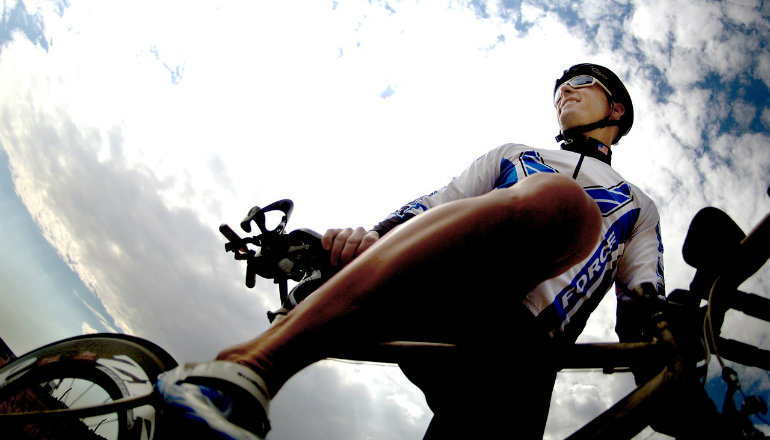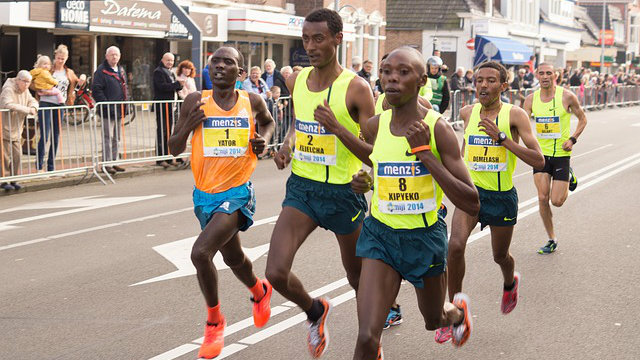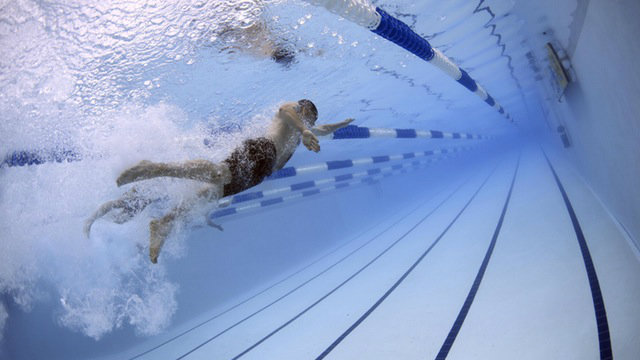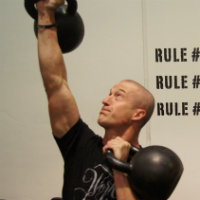 Reading Time: 6 minutes
Reading Time: 6 minutesWhat would you give up to reach your strength goals? The internet is filled with inspiring videos and memes — “When you want success as much as you want air, then you will be successful” — and all that.
But are we focused on the wrong thing? As I’ve gotten older, two things have started to happen. First, I recognize the place training should have in my life, which means it is there to support the rest of my life not be the central piece to my entire life. Second, as a trainer your clients will usually be fairly close to your own age. So as my age has increased, so has the average age of my clients.
Past the age of 44, the number one risk factor for death is coronary heart disease. This makes training quite a problem for most gym trainees because the number one thing pushed at gyms is strength training. Strength training can make things worse, not better, when it comes to heart problems.
How the Heart Adapts to Training
The heart, like other muscles, adapts to training. But the way the heart adapts is a little different. When we train regular muscle, called skeletal muscle, we attack either metabolic or neural components. The metabolic components are things like glucose storage, number of mitochondria, and the size of the muscle itself. When we train the neural adaptations. we are trying to teach the nerves to fire more muscle fibers so we can unlock more of our strength potential.
But the heart will adapt to strength training in the same way whether you train for metabolic or neural changes. Under the stress of strength training, the heart walls thicken. This is in response to the increased blood pressure seen from lifting weights, and in particular the valsalva maneuver, which has you hold your breath for protection while lifting.
You’d think that a thicker heart would be good. After all, a thicker muscle is a stronger muscle, right? In normal circumstances, yes, but the heart doesn’t necessarily get thicker by growing outward. The main chamber of the heart can actually become smaller as the heart thickens and internal diameter is lost. In other words, instead of your engine being the big V8 your external appearance might hint at, you might only have a Prius engine on the inside.
When you add on all the extra muscle that often comes with strength training, you can see how this can be a problem. That point where you added twenty pounds of muscle — like turning your Prius into a truck — but you kept the Prius engine? Believe me when I say that is going to be a problem later on.
The heart doesn’t just adapt to strength training; it has a specific way it adapts to endurance training, too. When it comes to endurance training, the heart stretches and becomes bigger and better at pumping blood around the body. That sounds good, right? Well, elite athletes who have done a lifetime of long hard sessions can actually develop a heart that is too big to control itself properly and needs a pacemaker to work correctly. This version can be like putting a jet engine into a Prius — it’s going to need some sophisticated engine management software to deal with all that.
The Hidden Danger of a Bigger Deadlift
If you’re in the second group – known as having “athletic heart” – the solution is simple. Reduce the volume and intensity of your endurance training for a short period until you return to within normal values. Usually this can be accomplished within a few months and then normal training can resume, although hopefully monitored and controlled better.
However, if you’re in the first group, you’re going to need to drastically change your outlook. This is why I asked that question at the start about how much you’re willing to sacrifice to achieve your goals. Are you literally prepared to die to have a slightly bigger deadlift? And are you willing to die for that deadlift when it’s still 200 pounds below the world record? I absolutely understand wanting to write your name in the history books, but I do not at all understand being willing to pay that price for only being in the eightieth percentile.
For you to fix the problems caused by your training means you’re going to have to actually do some cardio and get your heart functioning better. But here’s the thing — improving your heart function isn’t as simple as raising your heart rate. If that was the case, a gram of coke and a night at the strippers would lead to world-class performance.
When you lift weights, your muscles tense. When a muscle tenses beyond 50%, then blood flow is stopped to the working muscle. That means no more oxygen can be taken up by the muscles and therefore the demand for oxygen is lower, despite you having a higher heart rate. The only way to convince your heart to improve is to perform work that has a high oxygen requirement. There is no gym activity, from sled pulling to circuit training and everything in between, that is as effective for this as traditional cyclic aerobic activity — running, riding, rowing, swimming, and cross country skiing. At every heart rate, these achieve greater oxygen uptake than any form of loaded cardio.
Are You Training for More Years or More Pounds?
It’s your choice with your training, but I’ll happily choose another forty years on the planet over another forty pounds on my deadlift. The path forward with your training to avoid this possible complication is to use the gym for strength and use the age-old endurance methods for heart health. You know, use the strength tools and methods to get strong and the endurance methods to develop better fitness — and don’t confuse the two. What a surprise that things work better when you use them correctly, right?
The fastest way I have seen to improve heart health is via walking. A daily walk for thirty to sixty minutes will do wonders for your heart and body composition. As you get more used to moving for periods of time, you can substitute in running, cycling, rowing, or swimming. My personal suggestion is running by following a graduated run/walk program.
Don’t give up your health to chase your strength goals. Health -> fitness -> performance. Don’t try to do it the other way around.









